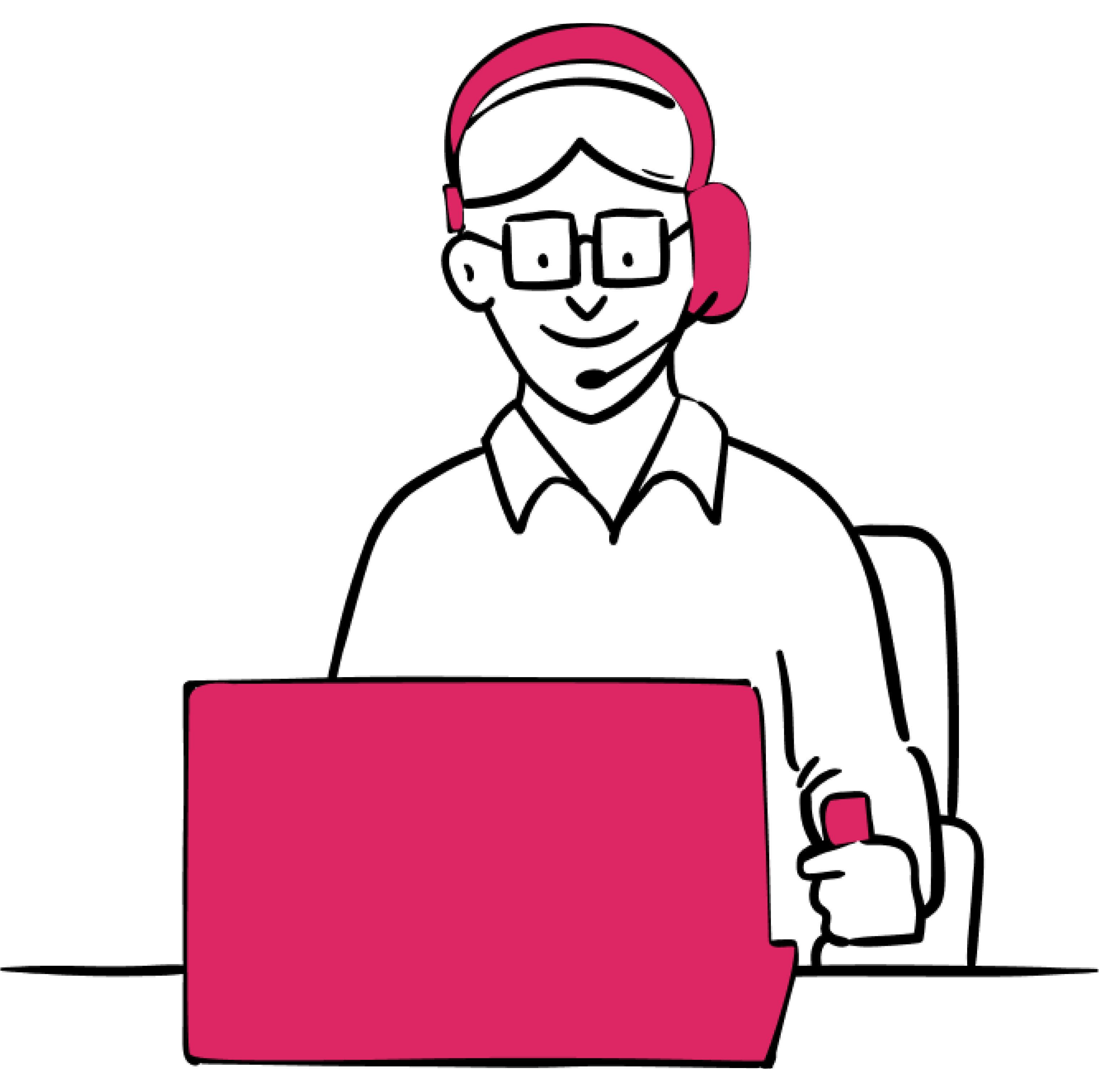
Insights: Election accessibility – Part 2
This is part two of a two-part series on election accessibility. In part one, we covered the ways people with disabilities access election information in the media. Now, we’re examining the accessibility of the voting process, including the barriers that many people with disabilities encounter that make it difficult or impossible to vote.
“I cannot vote in the municipal elections as the secretary of state has determined incorrectly that there is a burden to programming a device to register elections on a municipal level. I am currently trying through several organizations to push for a change to this.” — Andrew H
One of our key findings is that 15% of Fable’s community members who have overcome the barriers in voter registration and accessing information, and actually gone to the polls, have never-the-less failed to cast a ballot due to inaccessibility. Due to barriers in voter registration, access to polling information, and other stressors, many more people with disabilities are excluded from the process much earlier. Even those who do successfully manage to participate in the democratic process find the experience difficult, time-consuming, and laborious.
The makeup of Fable’s community
Before diving into the results, it’s important to understand the makeup of our community. Fable’s community is composed entirely of people with a disability who use assistive technology due to a physical or sensory disability. All members of Fable’s community are over the voting age and live in the United States or Canada, with the majority (59%) being in the US. A more detailed breakdown of the Fable community can be found in our Community Research Panel Report.
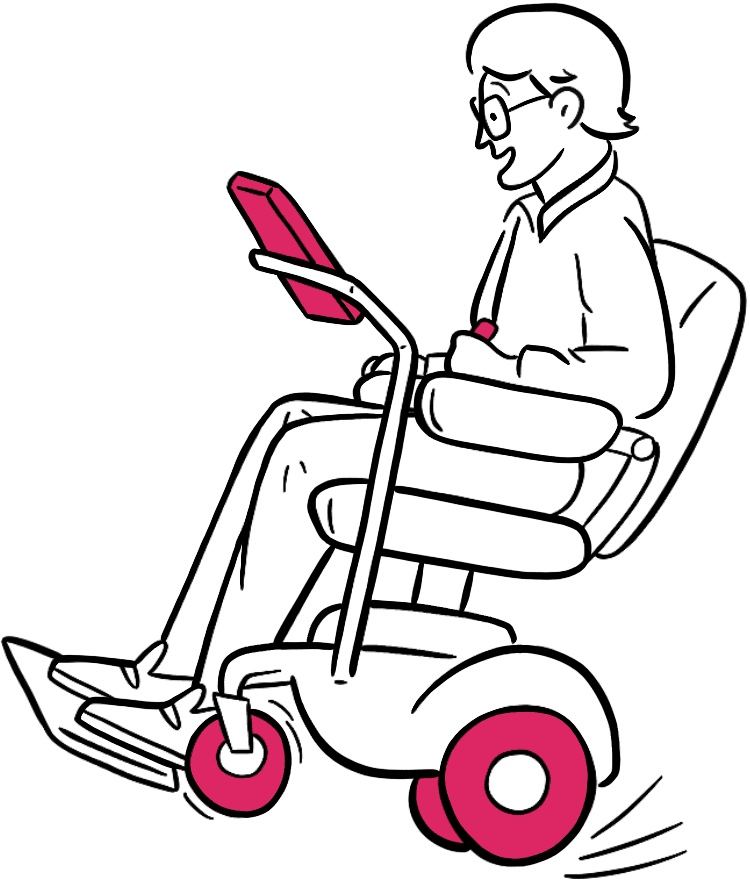
Registering to vote
“The only thing I got that would indicate to me how to register was a piece of printed paper in the mail that I couldn’t read. I didn’t have the time or interest to try and figure out a way around it.” — Charmaine C
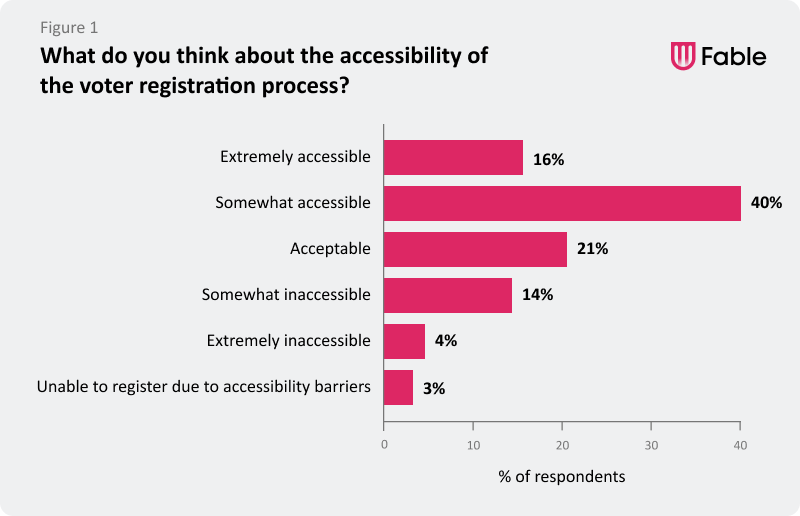
Before even casting a vote, the first step is to register. Only 3% of Fable’s community were able to register, excluding them from even attempting to vote. Of those who did register, only 16% said the experience was extremely accessible. The most common issues experienced were inaccessible methods of delivering information, no availability of alternative formats or methods, and the difficulty of discovering what the voting process was and how to complete it.
Voting methods
“I arrived at the voting station alone, needed assistance, and the voting staff said it would violate the law if they assisted me.” — Conor A
In Canada and the US, there are currently three primary methods available for people to vote: by mail, in-person during advanced polling, and in-person on election day.
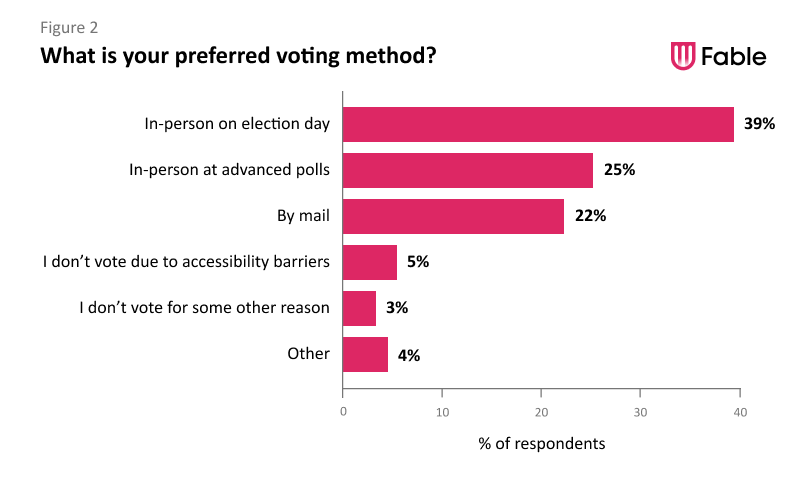
The above graph shows the most popular methods used by Fable’s community members who were able to register to vote in an election. Once again, 8% of our community reported dropping out of the voting process at this point.
Those who managed to register found voting by mail to be the most accessible way to vote. Polling stations can be inaccessible to access, difficult to travel to by public transportation, staff are often untrained, and the voting booth itself can be inaccessible. While voting by mail can have accessibility challenges of its own – mostly related to receiving voting materials in an accessible format – it does eliminate the physical access issues that come with in-person voting.
Fable’s community also reported making frequent use of advance polls. These polls are usually less crowded, and the staff have more time and energy to offer required assistance.
“It is 2024. How is it we can apply for [government programs], update our tax documents, access important government documentation like ID cards, and passports – and yet, I can’t vote electronically from home using my registered device, whether a smartphone, or a laptop/desktop? I know we can do it, just look at the COVID process and registration for vaccines, and appointments, etc. It would not only make it more accessible, assuming thought was put into it, it would be an option for the general population as a whole.” — Kostantino B
The most frequent request, however, was the ability to vote online. While Fable’s community is aware of the security complexities this would introduce, an accessible online system would provide them with a massive increase in independence and privacy, while dramatically increasing the ease of access to voting. Several different Fable community members felt that if the internet is secure enough for them to manage investments, money, and healthcare, it must also be secure enough to allow them to vote. In fact, eight countries thus far have already begun to use online voting, with Australia rolling it out specifically to people with disabilities, in order to increase election accessibility. Estonia is in the lead, allowing all citizens to vote online, and 47 percent of the votes in the last Estonian election were cast using their open-source iVote system.
Physical access to voting
“I had to use a walker to get to the voting station and there wasn’t any adequate seating available. I ended up having to stand to vote and ended up injuring myself.” — Shamila K
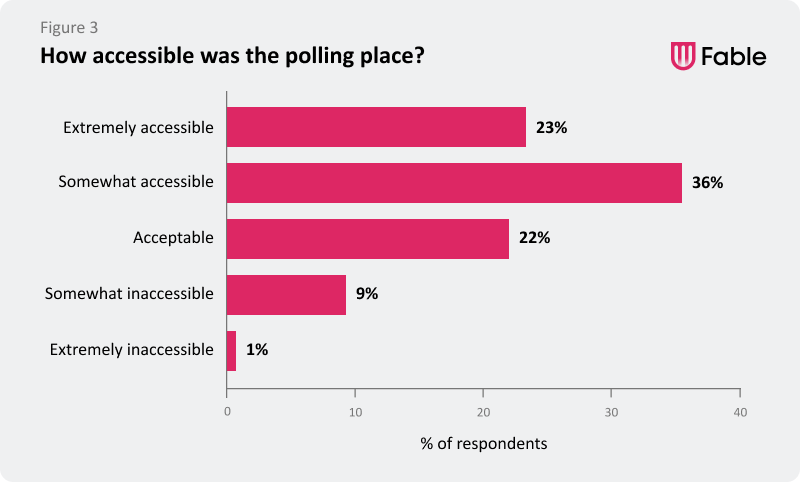
Of the members of Fable’s community who were able to get through voter registration, find out where to vote, and arrive at the polls, less than one quarter found the polling station to be extremely accessible, with most finding it only somewhat accessible. The barriers reported include poor access to the physical location of the station, inability to travel to the required location, and their required assistance being refused or unavailable.
The issues went beyond arriving at and accessing the polling station. Those who did not experience difficulties in these areas frequently found that they were unable to mark their ballot because no physical accommodations were provided, accessible formats were unavailable, accessibility accommodations were not working correctly, or the staff were untrained in helping people with disabilities.
“Staff are not fully trained, I have a guide dog and they wanted to pet her and give her treats. I had to navigate over cords and the actual card to fill out was not accessible. They gave me a little pencil to check boxes that I couldn’t read. I honestly gave up and walked out.” — Jaclyn P
The issue of inadequate staff training came up repeatedly in our survey. When it comes to something as critical as allowing citizens to vote, it is not enough to have accessibility policies documented or to have an accommodation method available if polling station staff lack familiarity with these policies and methods. In the case of voting, staff must know:
- What accommodations are suitable for what types of disabilities
- How the accommodations can be used and accessed
- The policies around staff assistance in the booth
- The policies around assistance from friends and family members
- How staff should interact with people with disabilities
Fable’s research revealed a lack of knowledge and training in all the above areas. To improve access to voting for people with disabilities, governments at every level need to not only ensure that accessibility has been considered throughout the process, but that all staff are aware of the policies and tools in place to help people with disabilities have a smooth and accessible voting experience.
Voting independence

All of the above factors mean that Fable’s community of people with disabilities generally require a large amount of assistance to vote. This assistance is typically provided in two ways. First, friends or family members helping people with disabilities determine the correct voting location and assisting them with travel. Second, polling staff helping to set up accessibility accommodations or reading and marking the ballot if no other method is available. People with disabilities would prefer to have the option of being assisted with voting by friends or family, or having a poling worker assist them instead.
“I can only assume that the poll worker was honest and ethical. Contrary to the rules, my wife wasn’t allowed to enter the polling booth to help me.” — Robert P
Based on our survey, Fable’s community believes that some amount of assistance will always be necessary in the voting process, and the majority are somewhat satisfied with the level of independence they have when voting. But for those who live alone, or do not trust the people they know to help them vote, the need to depend on others can be a showstopper. They may be unable to easily find someone to help them vote, or they may have wildly different political views and ideals than their available friends or family and are unwilling to trust that someone else will assist them honestly. In general, when members of our community feel uncertain that their vote will be honestly cast, they would rather not vote at all.
As the political landscape becomes increasingly polarized, and trust in election workers decreases, these issues will only become more serious, and the need to be able to cast votes privately and independently will become ever more crucial.
Conclusion
“The card in the mail is useless. Why not put a QR code on it like a digital passport to use with my phone. Then my screen reader could announce it.” — Jaclyn P
To ensure that people with disabilities have the independence they deserve when voting and to increase their ability to participate in elections in the first place, process and policy changes throughout the system are required. Here’s what members of Fable’s community propose:
- The thoughtful use of technology to increase accessibility. From making sure that mailed information is readable by everyone, to providing voter information online, to improving access to the physical voting process, technology has a vital role to play. Even if voting entirely online still feels far off, smaller steps can be taken to make voting easier and more accessible with technology.
- Ensuring that voting accommodations are always available. Unfortunately, accessible ballots and voting machines are far from universal, and too often, physical access to the polling station is impossible for Fable’s community of people with disabilities. As many members of our community choose to vote at advance polls because they are less busy, rolling out training and accessibility improvements at the advanced polls would be a high impact starting point for accessibility efforts.
- Staff at polling stations must be trained in accessibility and prepared to help. If voting accommodations are provided, they do no good if the staff has no idea they exist, don’t know how they work, and don’t understand the rules in place to ensure people with disabilities can cast a vote.
The electoral process is a perfect example of why accessibility requires involvement from people with disabilities throughout the process, from start to finish. It also shows that a change in accessibility thinking is needed. Accessibility is a process that must be measurable, repeatable, and on-going; accessibility can’t be “fixed” by making one change to one part of the process. It can only be fixed by involving the voices of people with disabilities in making the changes, rather than hearing from them as an afterthought.

